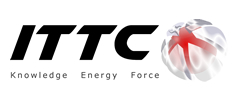how to write a reflection paper 8
Reflection Of Light
The concave mirror has a reflection surface that curves inward, resembling a portion of the interior of a sphere. When light rays that are parallel to the principal or http://peregrinesoftwareindia.com/how-to-end-an-essay-8/ optical axis reflect from the surface of a concave mirror (in this case, light rays from the owl’s feet), they converge on the focal point in front of the mirror.
Convex mirrors are also used as wide-angle mirrors in hallways and businesses for security and safety. The most amusing applications for curved mirrors are the novelty mirrors found at state fairs, carnivals, http://cadresdirigeantsci.com/how-to-write-an-essay-2/ and fun houses. These mirrors often incorporate a mixture of concave and convex surfaces, or surfaces that gently change curvature, to produce bizarre, distorted reflections when people observe themselves.
Concave mirrors, commonly found in the largest optical telescopes, are used to collect the faint light emitted from very distant stars. The curved surface concentrates parallel rays from a great distance into a single point for enhanced intensity. This mirror design is also commonly found in shaving or cosmetic mirrors where the reflected light produces a magnified image of the face. The inside of a shiny spoon is a common example of a concave mirror surface, and can be used to demonstrate some properties of this mirror type. If the inside of the spoon is held close to the eye, a magnified upright view of the eye will be seen .
The distance from the reflecting surface to the focal point is known as the mirror’s focal length. The size of the image depends upon the distance of the object from the mirror and its position with respect to the mirror surface. In this case, the owl is placed away from the center of curvature and the reflected image is upside down http://mintautobody.ca/writing-services-5/ and positioned between the mirror’s center of curvature and its focal point. When parallel rays strike the surface of a convex mirror, the light waves are reflected outward so that they diverge. When the brain retraces the rays, they appear to come from behind the mirror where they would converge, producing a smaller upright image .
Neutron Reflection
If the light strikes the surface at right angles it continues directly out of the water as a vertical beam projected into the air. If the light’s beam is directed at a slight angle to the surface, so that it impacts the surface at an oblique angle, the beam will emerge from the water, but will be bent https://freestocktrends.com/how-to-title-an-essay-13/ by refraction toward the plane of the surface. The angle between the emerging beam and the surface of the water will be smaller than the angle between the light beam and the surface below the water. The reflection patterns obtained from both concave and convex mirrors are presented in Figure 5.
The type of reflection that is seen in a mirror depends upon the mirror’s shape and, in some cases, how far away from the mirror the object being reflected is http://quiddityit.com/2020/09/02/how-to-start-a-college-essay-4/ positioned. Mirrors are not always flat and can be produced in a variety of configurations that provide interesting and useful reflection characteristics.
